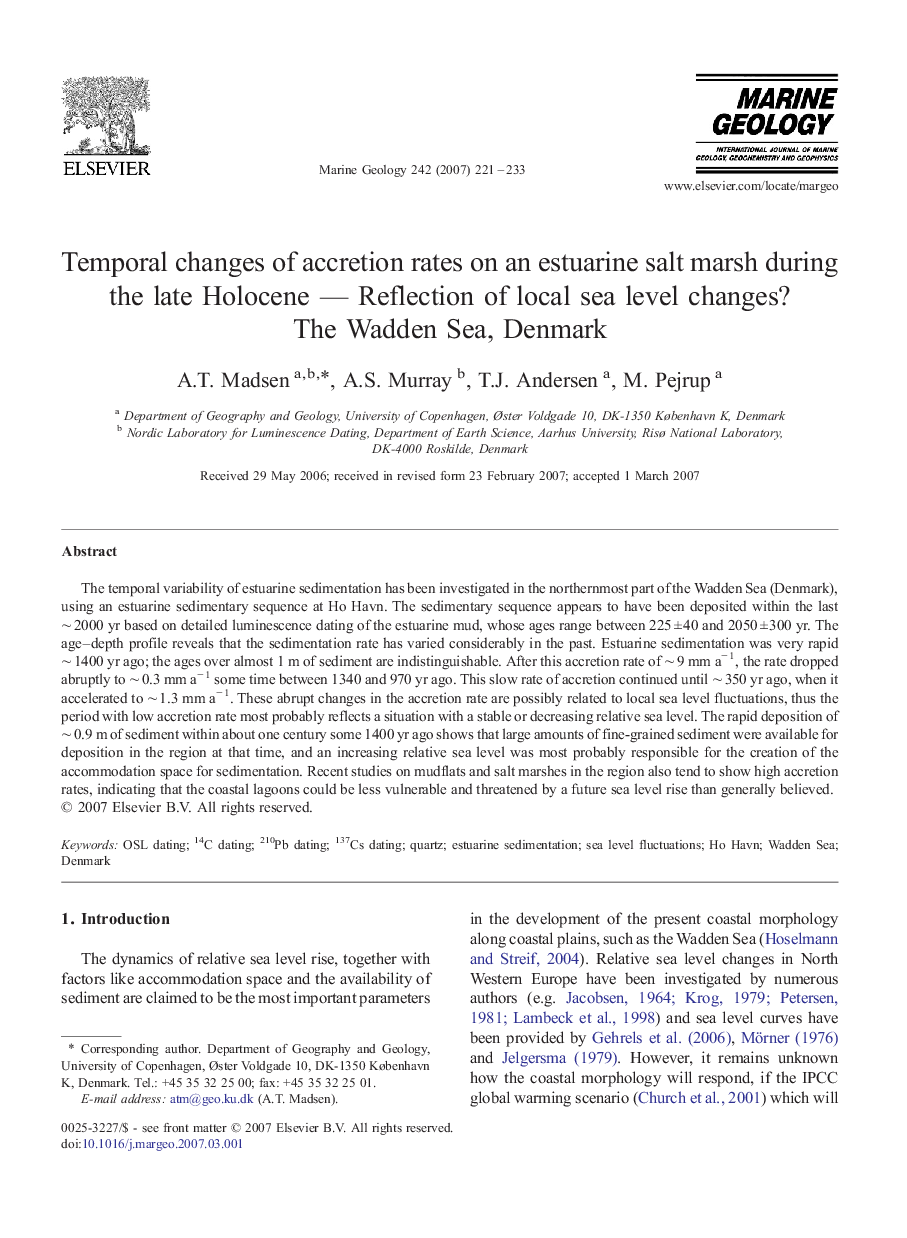| Article ID | Journal | Published Year | Pages | File Type |
|---|---|---|---|---|
| 4719551 | Marine Geology | 2007 | 13 Pages |
The temporal variability of estuarine sedimentation has been investigated in the northernmost part of the Wadden Sea (Denmark), using an estuarine sedimentary sequence at Ho Havn. The sedimentary sequence appears to have been deposited within the last ∼ 2000 yr based on detailed luminescence dating of the estuarine mud, whose ages range between 225 ± 40 and 2050 ± 300 yr. The age–depth profile reveals that the sedimentation rate has varied considerably in the past. Estuarine sedimentation was very rapid ∼ 1400 yr ago; the ages over almost 1 m of sediment are indistinguishable. After this accretion rate of ∼ 9 mm a− 1, the rate dropped abruptly to ∼ 0.3 mm a− 1 some time between 1340 and 970 yr ago. This slow rate of accretion continued until ∼ 350 yr ago, when it accelerated to ∼ 1.3 mm a− 1. These abrupt changes in the accretion rate are possibly related to local sea level fluctuations, thus the period with low accretion rate most probably reflects a situation with a stable or decreasing relative sea level. The rapid deposition of ∼ 0.9 m of sediment within about one century some 1400 yr ago shows that large amounts of fine-grained sediment were available for deposition in the region at that time, and an increasing relative sea level was most probably responsible for the creation of the accommodation space for sedimentation. Recent studies on mudflats and salt marshes in the region also tend to show high accretion rates, indicating that the coastal lagoons could be less vulnerable and threatened by a future sea level rise than generally believed.
